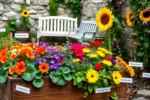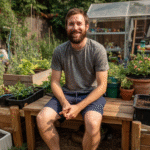Starting your first garden is like opening the door to a world of endless possibilities and vibrant life. Whether you’re a beginner sowing your first seeds or a seasoned green thumb looking to cultivate a new patch, choosing the right plants is crucial for success and satisfaction. This journey into the world of gardening can be as simple or complex as you wish, but it all begins with selecting plants that will thrive in your space and cater to your lifestyle. In this article, we’ll guide you through the best plant selections that promise not only to survive but to flourish in your garden, bringing joy and a sense of achievement to gardeners of all levels.
Choosing the perfect plants isn’t just about aesthetics; it’s about understanding the unique needs of each species and how they align with your environment. We’ll explore a variety of plants that are easy to care for, resilient, and rewarding, ensuring that even the most inexperienced gardeners can enjoy a lush, thriving garden. From sun-loving perennials to shade-tolerant annuals, these plants will lay the foundation for a garden that grows with your skills and passion. Our goal is to make gardening feel accessible and enjoyable, turning what might seem like a daunting task into a delightful adventure.
We understand that the first garden is often the most memorable, marking the start of what could become a lifelong passion. This article is designed to equip you with the knowledge and confidence to make informed choices, leading to a garden that reflects your personal touch and dedication. You’ll learn practical tips for selecting, planting, and caring for your chosen flora, ensuring that your garden becomes a thriving haven of beauty and tranquility. Join us as we embark on this green journey, where every plant has a story and every gardener has the potential to create something extraordinary.
Cherry Tomatoes (Beginner-Friendly Fruit)
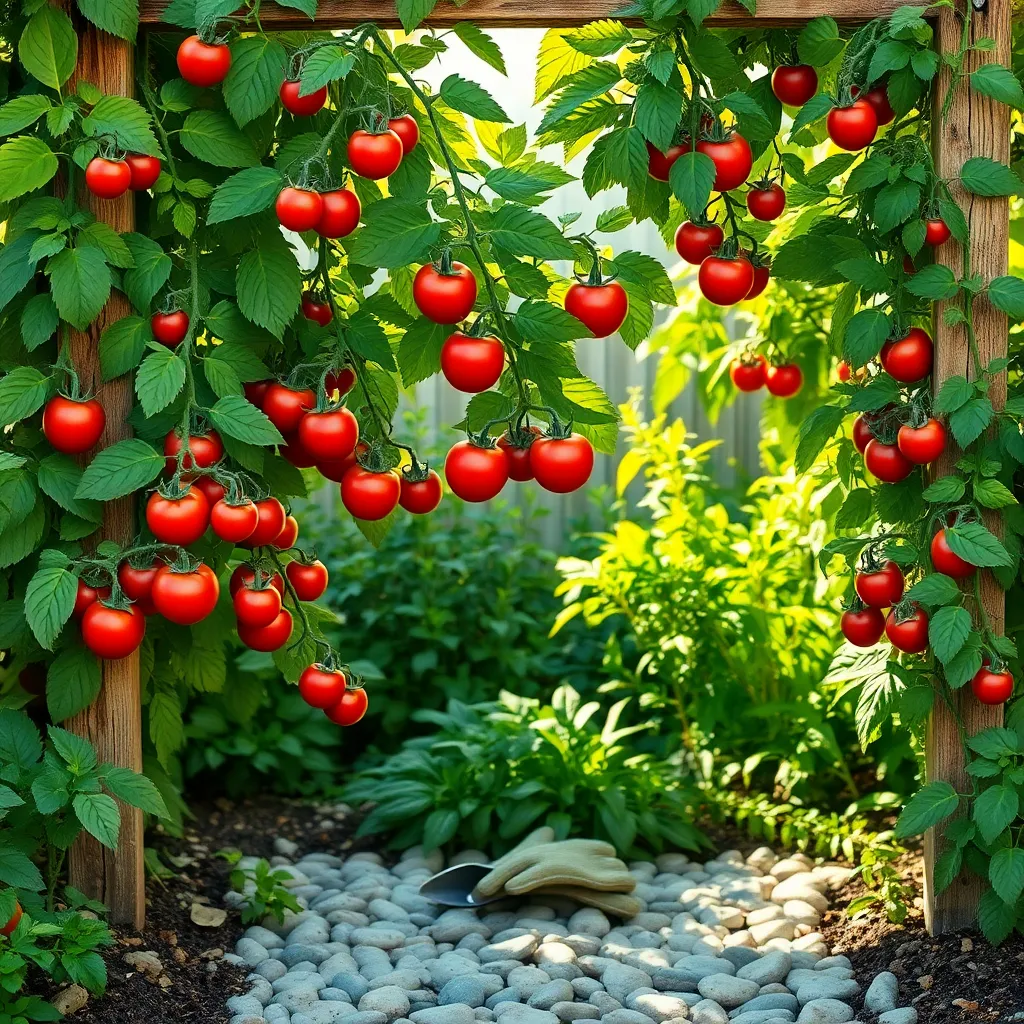
Cherry tomatoes are a fantastic choice for beginners, thanks to their high yield and ease of care. These small, juicy fruits thrive in a variety of climates and can be grown both in the ground or in containers.
To get started, sow seeds indoors about six to eight weeks before the last frost date. Once the seedlings are about 4-6 inches tall, they can be transplanted outside into well-draining soil with plenty of organic matter.
Ensure your cherry tomato plants receive at least six to eight hours of sunlight daily for optimal growth. Water them consistently, aiming to keep the soil moist but not waterlogged, which helps prevent root rot and other issues.
For those looking to enhance their gardening skills, consider using stakes or cages to support the plants as they grow taller. This not only keeps the fruit off the ground but also improves air circulation, helping to reduce the risk of disease.
Basil Plants (Aromatic and Fast-Growing)
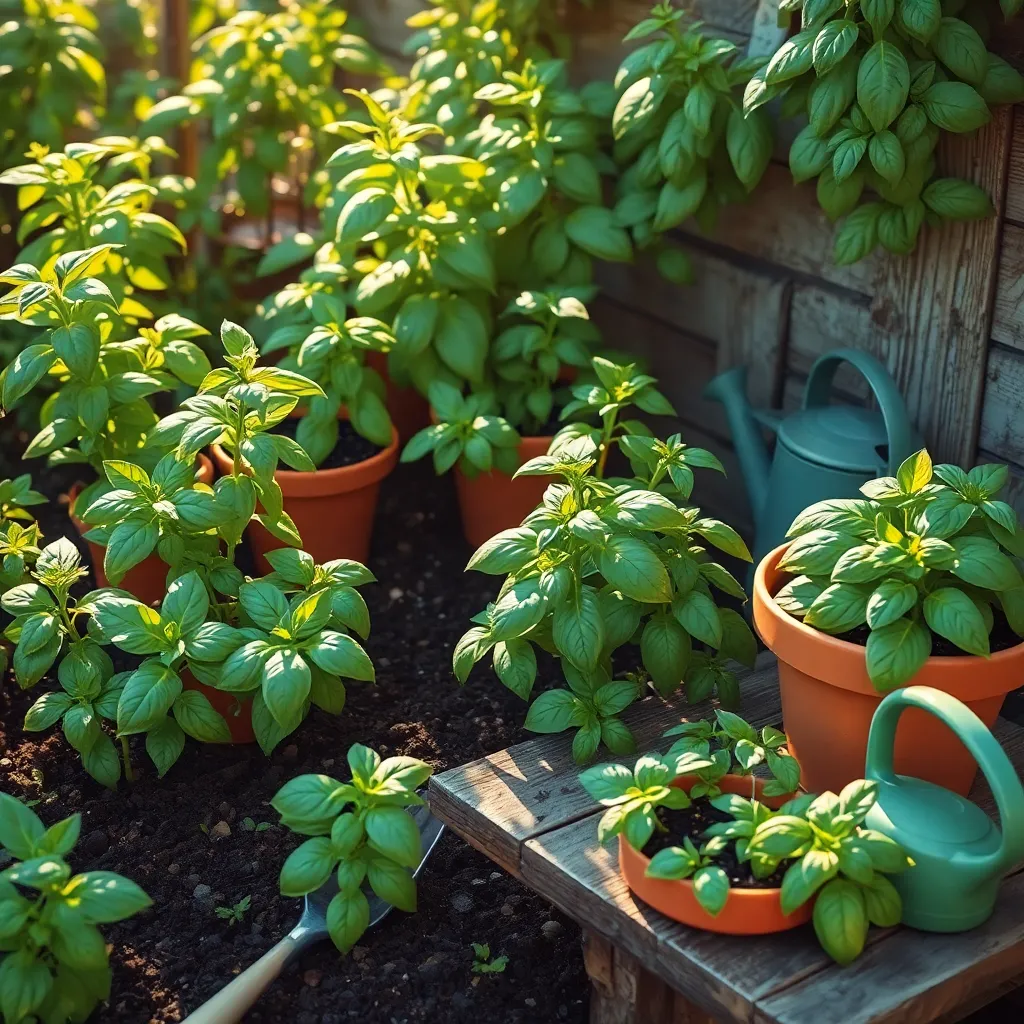
Basil is a popular choice for novice gardeners due to its simplicity and rapid growth. This aromatic herb thrives in warm climates and requires a sunny spot with at least six to eight hours of sunlight daily.
When planting basil, use well-draining soil enriched with organic matter to promote robust growth. Consistent watering is crucial, keeping the soil moist but not waterlogged, especially during the hot summer months.
For optimal growth, consider planting basil in containers or raised beds where you can control the soil conditions better. Pinch back the top leaves regularly to encourage bushier growth and prevent the plant from flowering too early.
Advanced gardeners might experiment with different basil varieties, such as Thai or lemon basil, to add unique flavors to their culinary repertoire. Companion planting with tomatoes can also deter pests, as basil naturally repels insects like aphids.
Sunflower Seeds (Vibrant and Hardy Blooms)
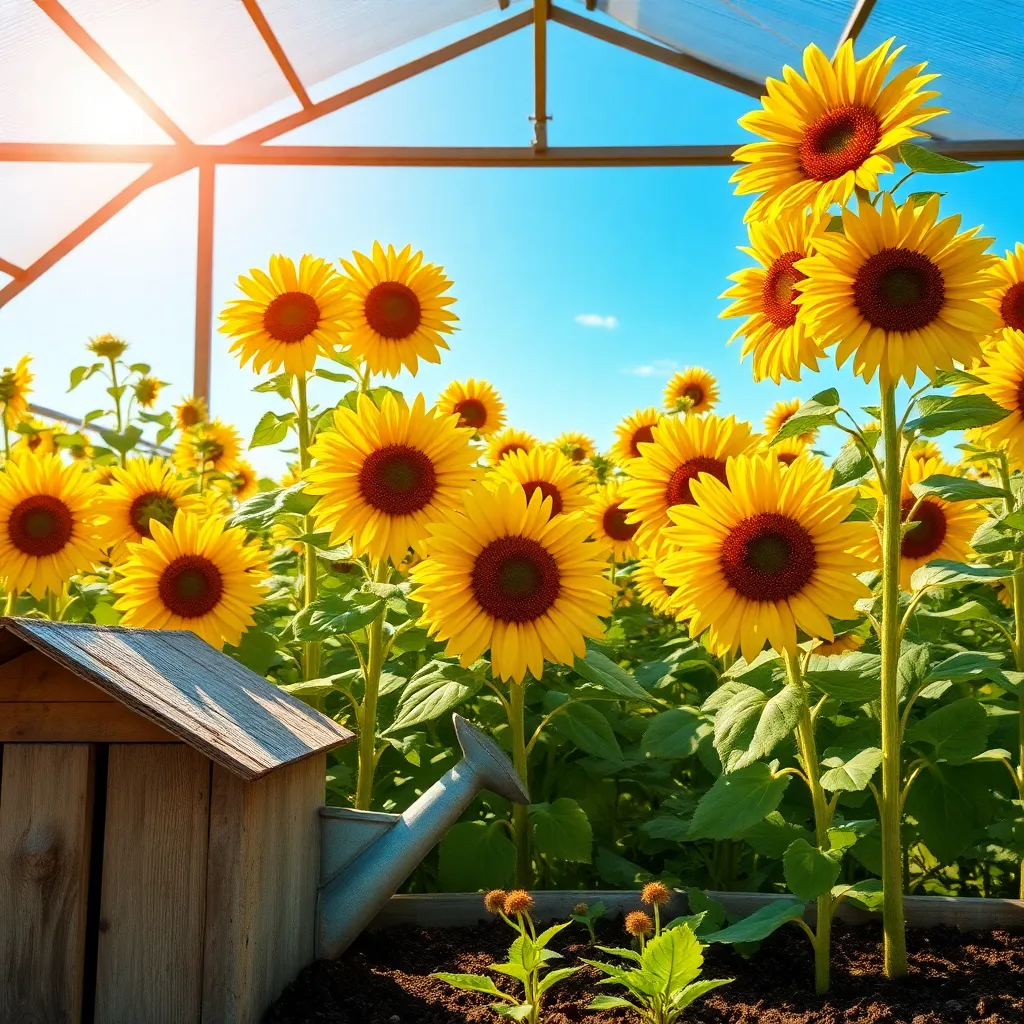
Sunflower seeds are a fantastic choice for first-time gardeners looking for vibrant and hardy blooms. These plants thrive in a variety of conditions, making them forgiving and rewarding for beginners.
Choose a sunny spot in your garden to plant sunflower seeds, as they need at least six hours of direct sunlight each day. Ensure the soil is well-drained and rich in organic matter to support their rapid growth.
Plant the seeds about an inch deep and space them 6 to 12 inches apart for optimal growth. Water them regularly, especially during dry spells, but avoid waterlogging the soil to prevent root rot.
For gardeners seeking a bit more challenge, try staking taller sunflower varieties to help them withstand wind. Additionally, you can deadhead spent blooms to encourage the plant to produce more flowers.
Mulching Techniques (Weed Control and Moisture Retention)
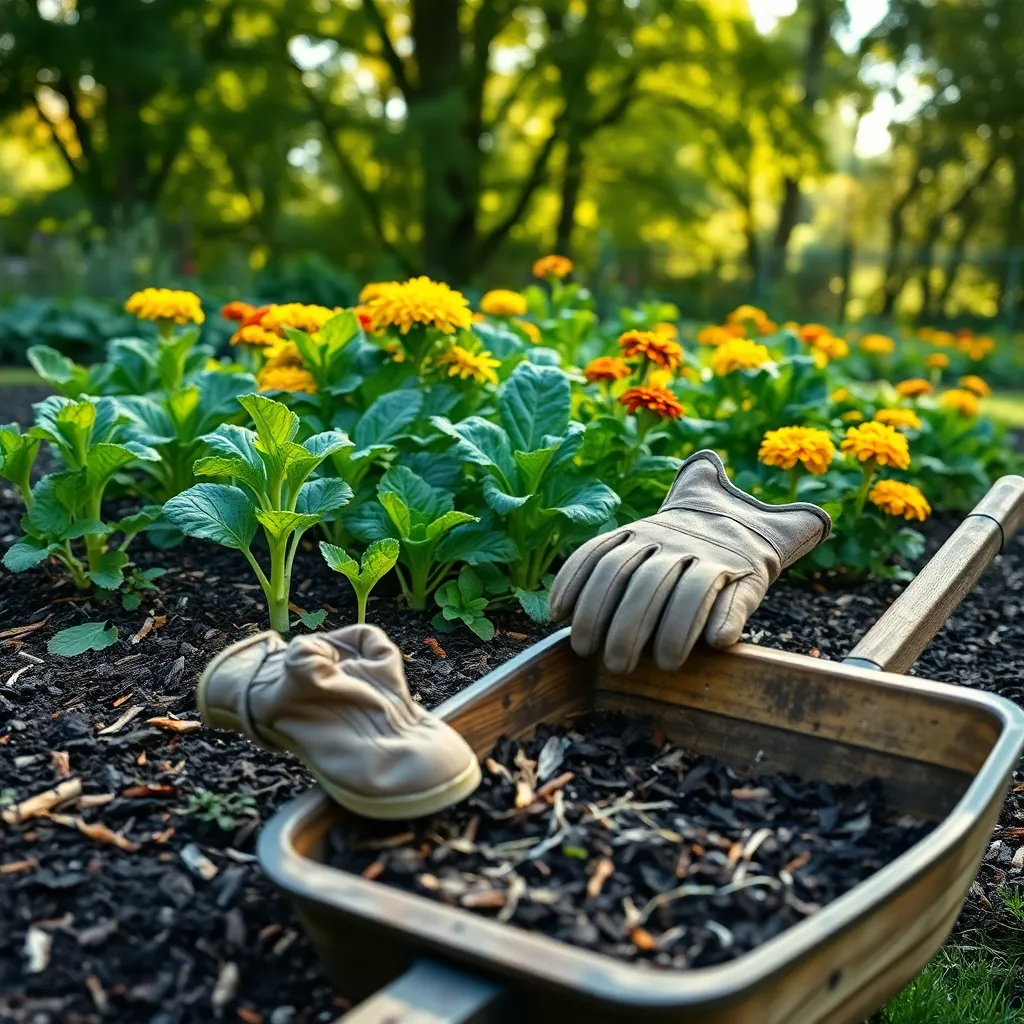
Mulching is a simple yet highly effective technique for ensuring your garden thrives, providing both weed control and moisture retention. By covering the soil with a protective layer of organic material, you can significantly reduce the amount of time spent on maintenance tasks.
For beginners, start with organic mulches such as straw, wood chips, or shredded bark, which are readily available and easy to apply. Spread a layer about 2 to 4 inches thick around your plants, being careful not to pile it up against stems or trunks to prevent rot.
Experienced gardeners might explore advanced options like using leaf mold or compost as mulch, which can enrich the soil with nutrients over time. These materials not only suppress weeds but also enhance the soil structure, promoting healthy root development.
To maximize moisture retention, apply mulch after thoroughly watering your garden to lock in moisture. This is especially beneficial during hot, dry spells when evaporation rates are high, helping to keep your plants hydrated.
Remember, mulching is not a one-time task; periodically check your mulch layer to ensure it’s still effective, replenishing as necessary. This proactive approach allows you to maintain optimal conditions for your plants, encouraging robust growth and vibrant blooms.
Compost Bins (Sustainable Nutrient Boost)
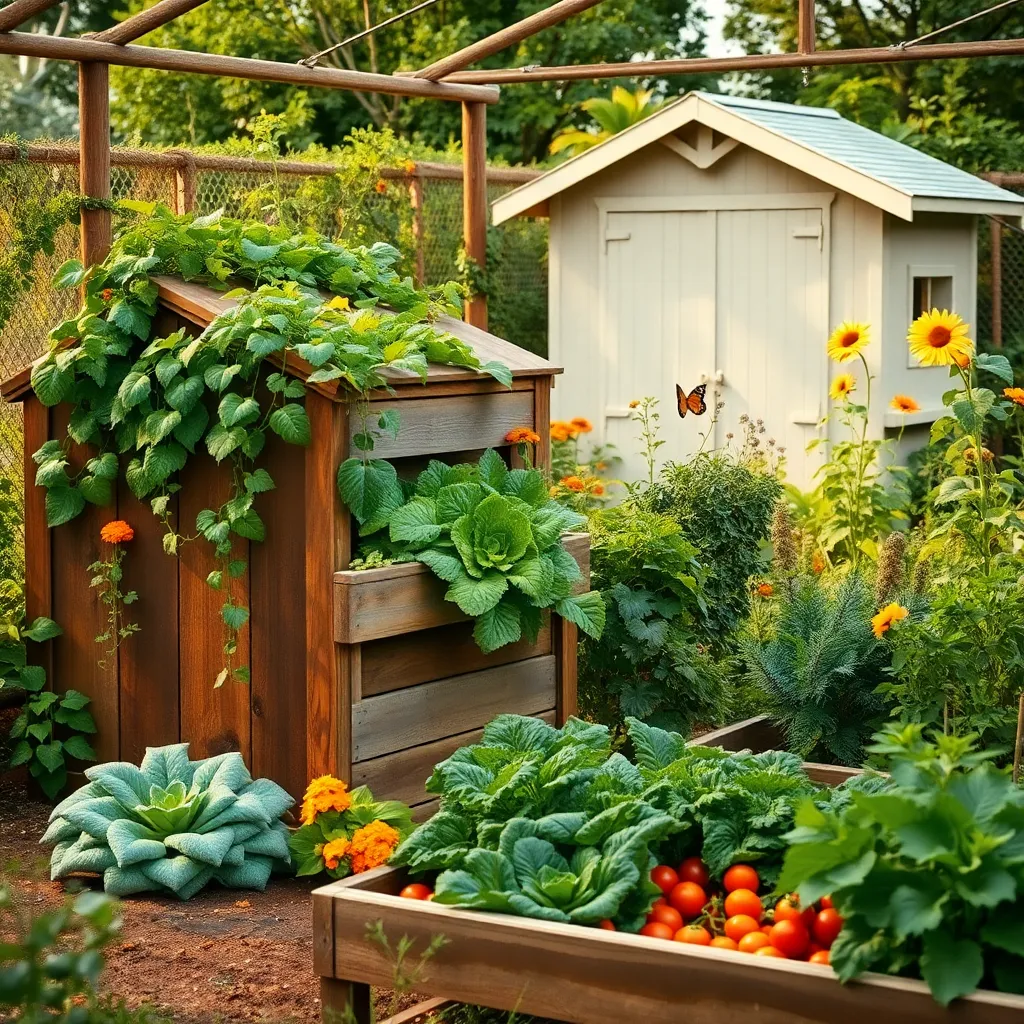
Creating your own compost bin is a fantastic way to turn kitchen scraps and yard waste into a rich, nutrient-dense material for your garden. This sustainable practice not only reduces waste but also provides your plants with a natural nutrient boost.
Start by choosing a location for your compost bin that is easily accessible but not too close to your home. Ensure it’s placed on bare soil to allow for good drainage and to enable organisms from the soil to aid in the composting process.
When adding materials to your compost bin, aim for a balanced mix of “greens” and “browns.” Greens include items like grass clippings and vegetable scraps, while browns consist of leaves and small twigs.
To speed up the decomposition process, turn the compost pile regularly and keep it moist but not waterlogged. For those looking to enhance their composting further, consider adding a compost activator to introduce beneficial microbes.
Conclusion: Growing Success with These Plants
In cultivating your first garden, we’ve explored five key relationship concepts that parallel the nurturing of personal bonds: choosing the right plants as you would a partner, understanding the importance of environment, learning patience and persistence, recognizing the need for regular attention, and celebrating growth together. These principles don’t just apply to gardening but are the bedrock of any thriving relationship. As you embark on this gardening journey, we encourage you to take the next step by selecting one plant today that resonates with you, symbolizing your commitment to fostering growth in both your garden and your relationships.
Remember, every successful relationship, like a flourishing garden, requires ongoing care and attention. Bookmark this article as a handy reference for when you need inspiration or a gentle reminder of these foundational concepts. By nurturing both your garden and your personal connections, you’re setting the stage for long-term relationship success, where love and friendships can bloom beautifully over time. Let this be the start of a vibrant journey filled with growth, resilience, and shared joy. Save this guide as your companion, and watch both your garden and relationships thrive.



